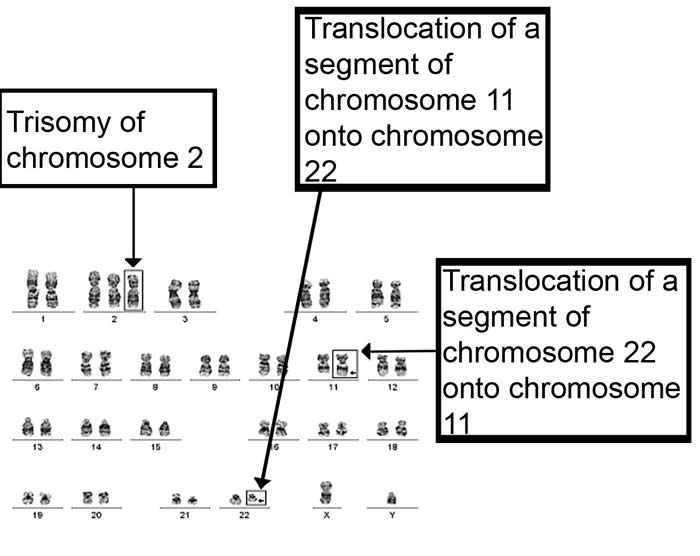Ewing sarcoma (ES) is associated with specific cytogenetic abnormalities involving reciprocal translocation between chromosome 11 and 22 – t (11;22) (q24;12).
- 85 - 90% of ES contain a t(11;22) genetic rearrangement
- Remaining 5 - 10% of tumors have a translocation between chromosome 21 and 22 – t(21;22) (q21;12).
- More complex translocation or variant translocation involving chromosome 22 can also arise very occasionally.
- Although genetic rearrangement differs between these translocation events, the molecular consequences are similar and the initial event for malignant transformation involves chromosome 22.
Example of Chromosome re-arrangement in a case of ES:

Translocation t(11;22)(q24;q12) causes the fusion of the EWS gene with the transcription factor gene FLI1.
Both FLI and ERG genes are members of the ETS transcription factor family. These translocation processes produce a hybrid transcript which is the result of splicing two genes together in one place and fusing the coding sequences near the breakpoint. Structural similarities between these translocations suggest that binding to similar DNA targets is highly likely.
The ultimate consequence of translocation is the production of aberrant (hybrid) transcription factor proteins which have profound effects on cell biology and function.
External Links:
This translocation and other genetic changes in ES are described in more detail at:
Atlas of Genetics and Cytogenetics in Oncology and Haematology
See also:
Cytogenetic Changes in the Ewing Sarcoma Family of Tumors at the NCI

